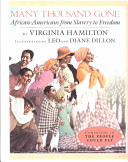
Recounts the journey of Black slaves to freedom via the underground railroad, an extended group of people who helped fugitive slaves in many ways.

Recounts the journey of Black slaves to freedom via the underground railroad, an extended group of people who helped fugitive slaves in many ways.
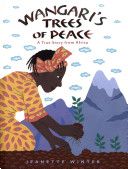
As a young girl growing up in Kenya, Wangari was surrounded by trees. But years later when she returns home, she is shocked to see whole forests being cut down, and she knows that soon all the trees will be destroyed. So Wangari decides to do something – and starts by planting nine seedlings in her own backyard. And as they grow, so do her plans. This true story of Wangari Maathai, environmentalist and winner of the Nobel Peace Prize, is a shining example of how one woman’s passion, vision, and determination inspired great change.
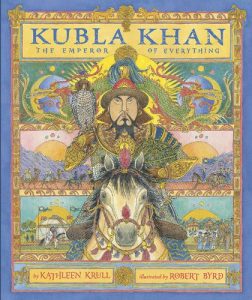 Always cast in a supporting role in the many books about Marco Polo, the great Kubla Khan now takes center stage in a splendid picture-book biography. He is a wonderful subject, Ã man who liked to live large, building the imperial city of Beijing from scratch, siring a hundred children, throwing birthday bashes for 40,000 guests. He ruled over the greatest empire of the time, one that was lightyears ahead of Western civilization in terms of the arts, sciences, and technology. With astonishingly beautiful and detailed illustrations by Robert Byrd and a clever text by Kathleen Krull, this portrait finally gives Kubla Khan his due.
Always cast in a supporting role in the many books about Marco Polo, the great Kubla Khan now takes center stage in a splendid picture-book biography. He is a wonderful subject, Ã man who liked to live large, building the imperial city of Beijing from scratch, siring a hundred children, throwing birthday bashes for 40,000 guests. He ruled over the greatest empire of the time, one that was lightyears ahead of Western civilization in terms of the arts, sciences, and technology. With astonishingly beautiful and detailed illustrations by Robert Byrd and a clever text by Kathleen Krull, this portrait finally gives Kubla Khan his due.
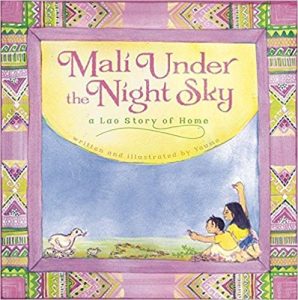 Mali Under the Night Sky is the true story of Laotian American artist Malichansouk Kouanchao, whose family was forced by civil war to flee Laos when she was five. Before the war began, Mali lived an idyllic life in a community where she felt safe and was much loved. But the coming war caused her family to flee to another country and a life that was less than ideal.
Mali Under the Night Sky is the true story of Laotian American artist Malichansouk Kouanchao, whose family was forced by civil war to flee Laos when she was five. Before the war began, Mali lived an idyllic life in a community where she felt safe and was much loved. But the coming war caused her family to flee to another country and a life that was less than ideal.
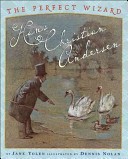
A biography of the famous Danish writer of fairy tales, interspersed with excerpts from his stories.
This picture book is about two huge supporters of modern art and literature, Gertrude Stein and Alice B. Toklas. Gertrude is Gertrude is Gertrude is Gertrude. And Alice is Alice. And Gertrude and Alice are Gertrude and Alice. And you are welcome to join them for tea. But beware, for there you will find a bear in a chair, just barely scary. And here is a beard with a man attached to it. And then, of course, some words might appear, uninvited , but delighted in spite of their lightbulbs. But that doesn’t make any sense.
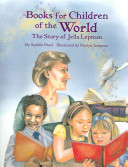
Presents the life of the founder of the International Youth Library in Munich, Jella Lepman, describing how she was sent by the United States Army to Germany in 1945 to assist German children and decided to build a children’s library.
Maud Lewis was born into a loving Nova Scotia family who accepted her physical limitations. When her parents died and she was forced to find her own way in the world, she married and set up a modest household in a small cabin. Despite the hardships she faced, she was able to find joy in her life, a joy that she expressed through her art. She painted canvases of animals, children, and her surroundings. Her art spilled over into everything from dust pans to the walls of her house. Maud Lewis died in 1970, but her wonderful, life-affirming art lives on and is treasured by people who understand and appreciate folk art all over the world.
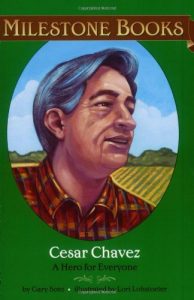 ¡Viva la causa!
¡Viva la causa!
¡Viva César Chávez!
Up and down the San Joaquin Valley of California, and across the country, people chanted these words. Cesar Chavez, a migrant worker himself, was helping Mexican Americans work together for better wages, for better working conditions, for better lives.
No one thought they could win against the rich and powerful growers. But Cesar was out to prove them wrong — and that he did.
A collection of mini-biographies follows the achievements of U.S. Navy Admiral David Farragut, baseball player Roberto Clemente, singer Gloria Estefan, schoolteacher Jaime Escalente, and six other notable Hispanic Americans.